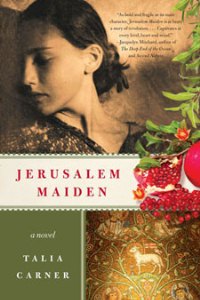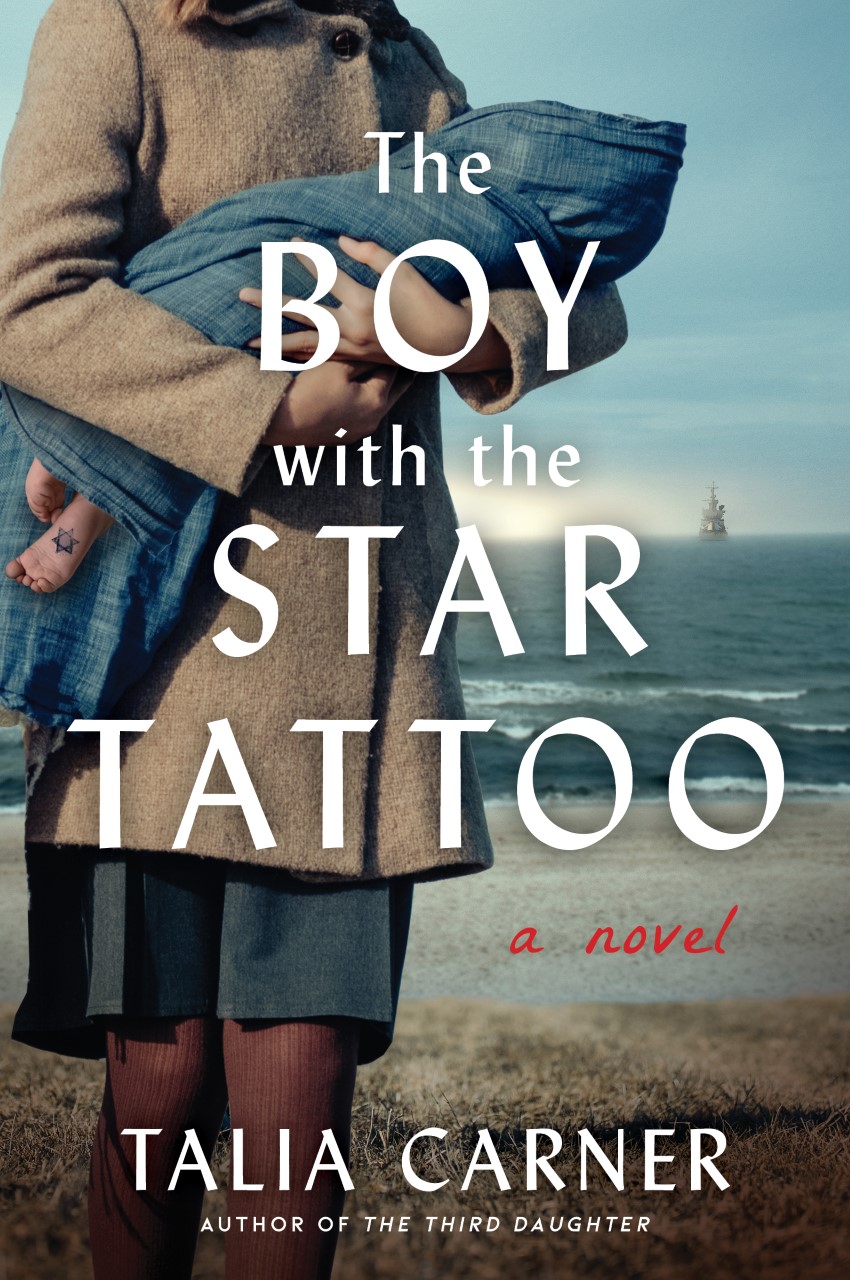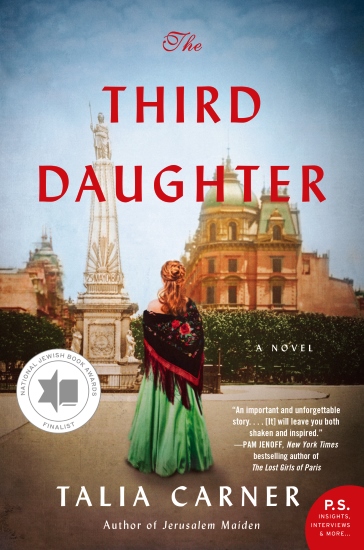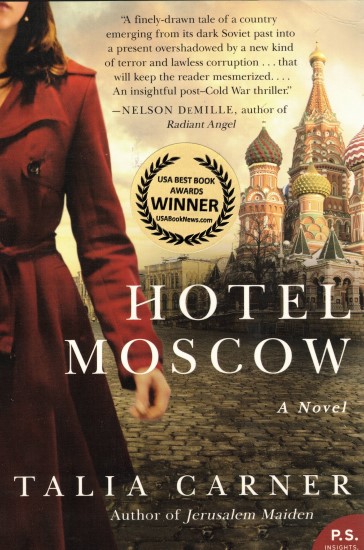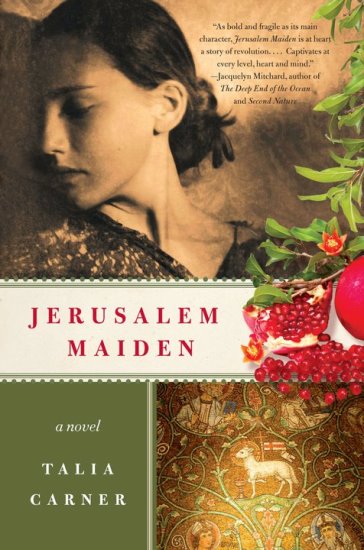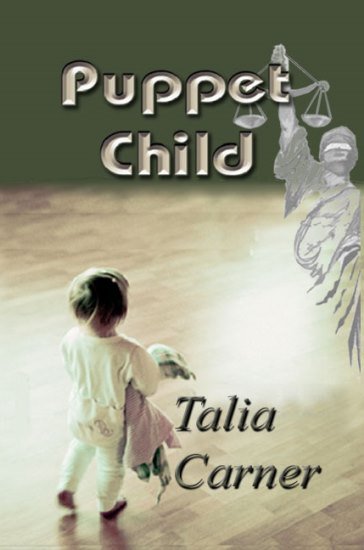The back story of JERUSALEM MAIDEN is multi-faceted. You may read the culmination of the inspirations for it at:
- Saving Rivka — Family lore that taught me what not to do rather than what to follow
- Crossing The Street — My friendships with Orthodox girls that have haunted me
- Tunneling Under Jerusalem — The extensive research behind the novel
- Amazon Exclusive: “My Breakthrough Novel Award” — The long road to publishing
- Unveiling the Jerusalem Maiden — My research into the lives of Jewish women
And then, there was my grandmother, who inspired me to write a “what if” alternative story for her untapped genius and unlived life.
My Grandmother, Myself
By Talia Carner
At a writing workshop I once attended, participants were asked to write about their grandmothers. The descriptions, often beautifully written, talked about the women who cooked and were always at home, eager and ready to welcome the grandchildren. These grandmothers were not out jogging around the neighborhood or traipsing the world as corporate executives.
The grandmothers had lumpy faces or deep-lined skin; they were elegant with their pearls or frumpy in their house dresses; their hair had gone gray or bleached into straw; they laughed easily or forever wrung their hands; they smelled of lavender or frying oil; they knitted sweaters or cared for chicken; they wore aprons or elastic-band denim pants; they had welcoming bony knees or pillowy laps; they used Pond cream regularly but none had face-lifts; they prayed with rosary beads or lit candles on Friday night. No grandmothers had sex.
They were generic grandmothers. With all the separate, detailed descriptions, they remained interchangeable. Their personalities faded on the pages as their progenies never explored the person behind each exterior. The childish me-centered view of their young years never seemed to have matured into a seasoned, developed view of the woman they so loved.
Not so my profile. In my Grandmother Esther, whose cooking skills were below average but whose embroidery left me breathless, I sensed an individual trapped in a role she had never wanted to play. She channeled her astonishing talent in art into the crafts permitted to women of her generation and religious background. She was a bird who longed to fly, but whose wings had been clipped. Behind the ample body that had borne six children, I could see her as she looked in the only photograph of her youth at age sixteen, posing by a staircase before ascending to a great future that never materialized.
In the 60s, while on a mission on behalf of my Tel-Aviv-based French school, I visited Paris for the first time. The meager budget of fifty dollars permitted each student for the entire month was supposed to even out the economic inequalities among us.
“This is ridiculous,” my feisty grandmother Esther said upon hearing the limit. She tucked in my palm another fifty-dollar bill, doubling my spending money. “Buy us soap.”
Foreign-made fragrant soap was one of her luxuries. In the years the nascent, austere Israel had no patience for pampering, I had accompanied my grandmother prowling back alleys, where sailors sold smuggled toiletries. She kept the tissue-wrapped soap bars in her armoire, and their aroma infused both her clothes and the chocolate she still locked years after her children had left home. When she handed me yet another skirt, vest, or even a minimal bikini that she had knitted especially for me, they were spiked with the scent of sandalwood, pine or lavender.
As I walked the streets of Paris, stretching my grandmother’s fifty dollars to pay for both the aromatic café au lait in wide-open mugs and bars of scented soap, my grandmother’s presence hovered near for another reason. The dilapidated buildings of Montparnasse were yet to be torn down and still housed ateliers of starving artists, while the run-down Montmartre burst with fabulous street artists working their craft to the tunes of French folk songs pouring from the surrounding cafés. Walking the cobblestoned alleys day after day, I suddenly had a vision of my grandmother living here. She belonged here.
Born in 1900 in Jerusalem, my Grandmother Esther was extraordinarily gifted with her hands. She bragged that the underside of her knitted or crocheted pieces looked exactly the same as the top. Not quite. We joked in the family that you could never balance a plate on her tablecloths because the embroidery projecting from the surface were miniature sculptures. So were the clothes she made for me, often adorned with sculpted yarn. Her hands were forever busy knitting, crocheting or embroidering works that were museum-quality. She followed no written instructions; intricate visions translated in her head into patterns. Too young to fathom all the possibilities her talent might have led her, I had nevertheless sensed that her gift was worthy of admiration far beyond our family.
Walking Paris streets, it dawned on me: My grandma should never have become my grandma. She was a Bohemian born in the wrong time and place. This was supposed to be her home. Forty years earlier, she should have been a part of the avant-garde scene I was learning about.
Grandmother Esther’s artistic talent seeped into the veins of her daughters and granddaughters. In addition to our inherent ability to sew and knit, all of us can paint, draw or sculpt. Today, some of us do it professionally, others only dabble, and yet others, like me, let the gift go to waste. At the time I walked those streets of Paris, my own mother was yet to blossom as an artist who, without ever attending an art class, would sell internationally thousands of finely-detailed oil paintings produced with the same precision and speed her mother knitted.
And there was another side to my grandmother, a side I heard in stories rehashed by her daughters. While she regaled me with tales of her childhood in Jerusalem, or sewed dresses for me, or took me to museums, my mother and her sisters spoke with bitterness about the harsh and irritable mother who had reared them, an angry woman who “divided and conquered” her brood by turning them one against the other.
She would disappear without prior notice. Returning from school, her children would find a note, “I’ll be back in a week.” She ran away to the hot baths of Tiberia, the only place a woman could travel alone. Yet once her three oldest daughters matured and their antagonism toward her hardened, retroactive speculations rose regarding lovers. One aunt claimed to have witnessed a scene at the food store where a neighbor named her own husband as the father of another of my grandmother’s daughter. Another aunt told about “discovering the rabbi” in my grandmother’s bed.
The woman who would not have become a mother had she had the choice also bore two sons, my uncles. Both disabled, they added to her unceasing physical burden and emotional strain. Yet, by the time the many grandchildren came along, she must have resigned to her fate. Years came in which three daughters and their families moved back into their parents’ spacious apartment, leaving to my grandmother the daily care of five infants under the age of three—one stricken with polio. The embittered, angry Esther of yore never complained about the incessant labor. Or if she did, no one listened, or cared.
In the horde of grandchildren, there was me, feeling special, often the sole recipient of the beautiful dresses she had sewn. Perhaps because I took special delight in her stories which she accompanied with songs and riddles, or perhaps because she knew I saw the free-spirit artist behind the woman slaving in her kitchen to produce meal after meal for thirty ungrateful family members who lounged around her home every weekend. (Only my gentle, quiet grandfather, a prosperous merchant who seemed fearful of my grandmother, helped her, forever washing dishes.)
My mother was absent on those Shabbats. Scarred by her childhood, she avoided the weekly family gatherings with their lingering squabbles and bickering, but I savored them. Hearing the tales of the stigmatization my mother suffered as “ugly,” the blatant discrimination my oldest aunt experienced in favor of the next child, a boy, the unkindness another daughter had suffered—and the frequent spanking the girls endured—my sympathies curiously went to the overweight woman with swollen ankles, working so hard for her family, never forgiven her earlier years.
She was a woman forever trapped in a life that never meant to be hers.
On my next month-long visit to Paris four years later, I faced the Louvre and took in the immense structure. When the mass of tourists congregated around the Mona Lisa, I chose instead to get lost in a maze of hundreds of rooms, where the only sounds were my footsteps and the snoring of the occasional guard. This is where my grandmother’s work should be hung, I thought, and my hand curled around the latest soap bar in my satchel. This was where her work would have hung had she been permitted to use brushes and paint instead of needles and thread.
Decades later, with three completed novels behind me, two of them published, I sat yet again in front of a blank computer screen. I needed not search for a new idea. The time had come for me to conjure my grandmother’s alternate life, my own “what if” version of her complex personality juxtaposed against her untapped genius.
I had access to a detailed ten-generation family tree starting in 1794 with Rabbi Abraham Shlomo Zalman Solomon (“Reb Zalman Zoref”) who migrated from Lithuania to Jerusalem and became a community leader. Books and letters documented the historical facts of the backward and corrupt Ottoman Empire’s rule of the Holy Land until 1917. But beyond that, there was scant documentation of Jewish women’s lives. Historians, all males, were ignorant of women’s issues, while Jewish women believed that suffering in Jerusalem—pestilence, hunger, and fifty percent infant mortality rate—was a fact of life.
To support my grandmother’s stories with sound facts for the background of JERUSALEM MAIDEN, I read hand-written journals and letters at a specialized Jerusalem library, consulted historians, and used rare maps to walk the streets and study the topography and architecture of Jerusalem’s neighborhoods. I had heard from my mother that her own grandmother, my grandma Esther’s mother, was a brilliant daughter of a rabbi. With her father’s blessings, she used to sit outside his one-room yeshiva to listen so she could learn everything he taught his students. He married her off to his star pupil—the best a bright woman could hope for was a good match—and she bore him fourteen children. Wishing to understand the life of such capable, yet thwarted women from the inside, I interviewed aging women about the nuances of their own mothers’ lives.
Chapter after chapter I set the stage for complex family dynamics, steeped with violence and betrayal in the insular community that further isolated its girls, especially the feisty ones who sought freedom.
Instead, my fictional Esther took off to Paris.
Refreshing my French, I rushed to follow her and study the avant-garde era and its art world as well as Jewish life there between World Wars I and II. It was fascinating to walk again the streets of Paris as I had done so many times in the intervening years, now a “flaneuse,” an ambler. My eyes stripped the city of its modernization since the 1920s, when my protagonist Esther lived her Bohemian life there. The façades of museums and churches were yet to be cleaned by power-washing that only began in the 1960s; at my Esther’s time they were covered with layers of soot and pigeon droppings hundreds-of-years old. In many houses, if water was piped, it reaches a few designated spots, and a slop wagon rolled by daily to remove human waste.
Part of the plot of my grandmother’s “what if” life had dwelled in my head for a long time. But connecting the dots with events and characters that would make the story plausible often came in “eureka!” moments: [SPOILER paragraph: A remark by a rabbi sent me to study the art in Jerusalem’s churches. The mention of micrography opened a new form of artistic expression for my protagonist. A comment by an art historian presented the Expressionist Ch’aim Soutine into her life. The sight of St. Sulpice church’s unfinished tower gave me the setting for the return of the man Esther could never forget.]
I had studied the Bible’s Old Testament for twelve years and loved its stories told in their special grammar and cadence. At age twelve, I even won the school’s Bible trivia contest against older students. Therefore, entering the mind of a girl who knew little else and whose metaphors and images were solely biblical came to me naturally.
But in the years-long process of shaping the material into a suspenseful novel, I realized that Esther’s story was still universal. As I sat on the bench across from St. Sulpice church, pretending I was Esther coming into herself, I munched on the kosher pastry bought in Le Marais and grasped how, even in the 21st century, all too many women in Western societies were bound by self-imposed social, religious or psychological constraints lodged in their heads, constraints that held them back no less than did Esther’s God—or the rabbis’ interpretations of His will.
Finishing JERUSALEM MAIDEN left me wondering what it took to reconcile a woman’s yearning for individuality with the demands of social traditions and her own faith.
